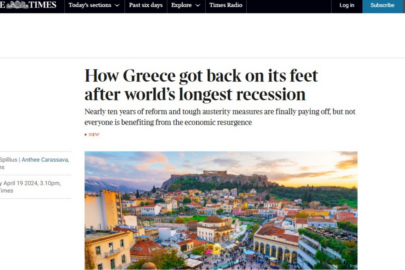The European Fund for Strategic Investments (EFSI), also known as the Juncker Plan, will have a positive impact on the Greek economy, according to the comparative data released by the European Commission.
Greece comes first in the list of investments launched under the EFSI in relation to its GDP, shortly before the Jean Claude Juncker’s term of office expires.
In particular, Greece has benefited from a EUR 2.7 billion financing from the European Investment Bank, which is expected to trigger total investment of EUR 12.1 billion.
The programme for small and medium enterprises (SMEs), includes 14 approved agreements with intermediary banks financed by European Investment Fund (EIF) with EFSI backing, €434 million in total financing is
set to trigger approximately €4.8 billion in investments with some 25,820 SMEs and mid-cap companies expected to benefit from improved access to finance.
Overall in the EU, by October 2019, the Juncker Plan is projected to mobilise additional investment of € 439.4 billion.
Moreover, according to European Commission data, about 70% of the investment expected to be mobilised comes from private sources, which means that the Juncker Plan has also met the objective of mobilising private investment.
In addition to the direct impact of the Juncker Plan on employment and GDP growth, it will also have a long-term macro-economic impact on the EU, according to the European Commission.
By 2037, actions under the Juncker Plan are expected to have created an additional 1 million jobs and increased EU GDP by 1.2%.
Finally, as evidenced from European Commission data, the Plan has supported other EU objectives, such as climate policy, social policy and transport policy.
In particular, thanks to the plan, as mentioned above, more than 10 million households have access to renewable energy, 20 million Europeans benefit from improved health care services and 182 million passengers a year are accessing better railway and urban infrastructure.





































